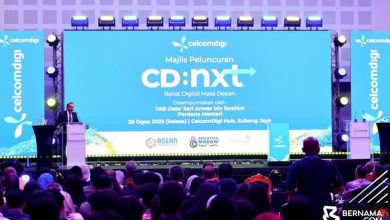A Third of the Global Workforce Requires Reskilling in the Next 3 Years – Dickson Woo of IBM Malaysia on Tech Talent Gaps Concerns

Dickson Woo of IBM Malaysia on Tech Talent Gaps Concerns
Technological advancement is relentless, and humans are struggling to catch their breath. Malaysia finds itself at a pivotal crossroads, with its ambition to become a regional leader in the digital economy under threat. Not due to a lack of vision or investment, but because of a gap that’s widening faster than many anticipated—the talent gap!
As industries embrace AI, cloud computing, and cybersecurity, the demand for a skilled workforce is skyrocketing. Yet, the supply is struggling to keep pace. How can Malaysia ensure it doesn’t fall behind in this race? Let’s hear some insights from Dickson Woo, Managing Director and Technology Leader of IBM Malaysia.
The Challenge: Levelling the Workforce Field
According to Woo, a significant proportion of the workforce is not equipped to fully capitalise on the digital transformation that Malaysia is striving for. “IBM’s 2024 CEO Study revealed that 35% of the global workforce will require retraining and reskilling over the next three years to stay competitive,” Woo notes. This statistic highlights a challenge that exists on both a local and global scale.
But why is this gap so pronounced? The answer lies in the rapid evolution of technology itself. “Malaysia needs more digital talents in areas such as AI, cloud computing, cybersecurity, data, and project management, not only at the foundational level but also at the enterprise level,” Woo emphasised. The reality, however, is that Malaysia’s workforce is still catching up. The pace at which these technologies are advancing outstrips the current educational framework, leaving a gap that needs urgent attention.
Education, Industry, and Policy: A Collaborative Solution
So, how can Malaysia bridge this gap? Woo suggests that the solution lies in a collaborative approach between educational institutions, industry leaders, and policymakers. “Public and private partnerships can bridge skill gaps, with industries collaborating on training programs, internships, and innovation hubs,” he explains. The emphasis on collaboration is crucial; no single entity can address the talent gap alone, and it requires a concerted effort across multiple sectors.
Woo provided the case of IBM Malaysia as an example, penning partnerships with educational institutions and non-profits to advance the talent upskilling agenda. IBM Malaysia has worked with notable institutions such as Universiti Malaya (UM) and Universiti Teknologi MARA (UiTM). These collaborations have supported learners at various levels, ranging from K-12 to tertiary and adult learners, with industry-relevant learning materials and digital credentials. While this case illustrates a proactive step towards talent development, it underscores the broader need for continuous, multi-sectoral efforts to meet the growing demands of the digital economy.
Integrating digital skills into the education system from an early age is another essential strategy. “Promoting STEM from early education through to higher education is key,” Woo argues. He highlights this matter, stating that by embedding these skills in the curriculum, Malaysia can ensure that the next generation is not just digitally literate but also digitally proficient. “Early exposure to these skills lays the foundation for a workforce that’s ready to innovate and lead, rather than follow,” he adds.
A Storm Is Approaching: Future-Proofing the Workforce for the Frenzied Tech Landscape
Let’s talk about the future – how can Malaysia ensure that its talent pipeline remains relevant in the long term? Woo advocates for robust investment in research and development, coupled with a clear national digital strategy. “Investing in R&D will drive innovation and future-proof the workforce,” he notes.
This is where the private sector’s role becomes even more critical. By fostering an environment conducive to continuous learning and digital advancement, companies can ensure that their employees are not just keeping up with the latest trends but are also prepared for the next wave of technology disruptions.
Looking ahead, Woo underscores the importance of strategic foresight. “It’s not just about filling current gaps, but about anticipating future needs. The real challenge lies in staying ahead of the curve,” he remarks. This foresight will be critical in ensuring that Malaysia’s workforce is not just being reactive, but also proactive in embracing the changes brought by technological advancements.
Heads Up: It’s Time to Turn Vision Into Reality
Is Malaysia doing enough? While various initiatives are in place, the scale of the challenge demands more than isolated efforts. It requires a unified movement to turn the vision of a digitally empowered Malaysia into reality. As the nation continues its journey towards becoming a digital powerhouse, bridging the talent gap is not just essential but urgent.
Like a ship setting sail into uncharted waters, Malaysia must ensure its crew is skilled and ready for the voyage ahead – because in this digital age, only those who are prepared will reach the shores of success!




